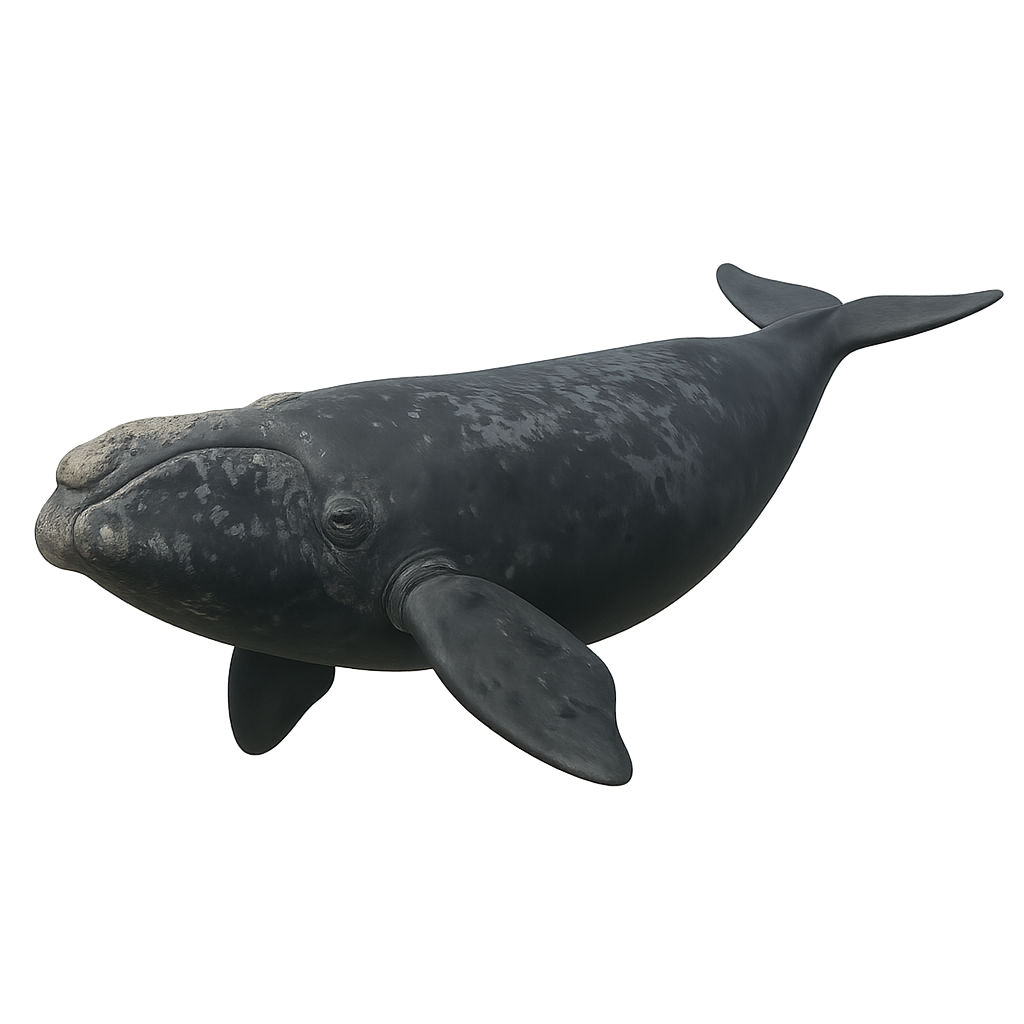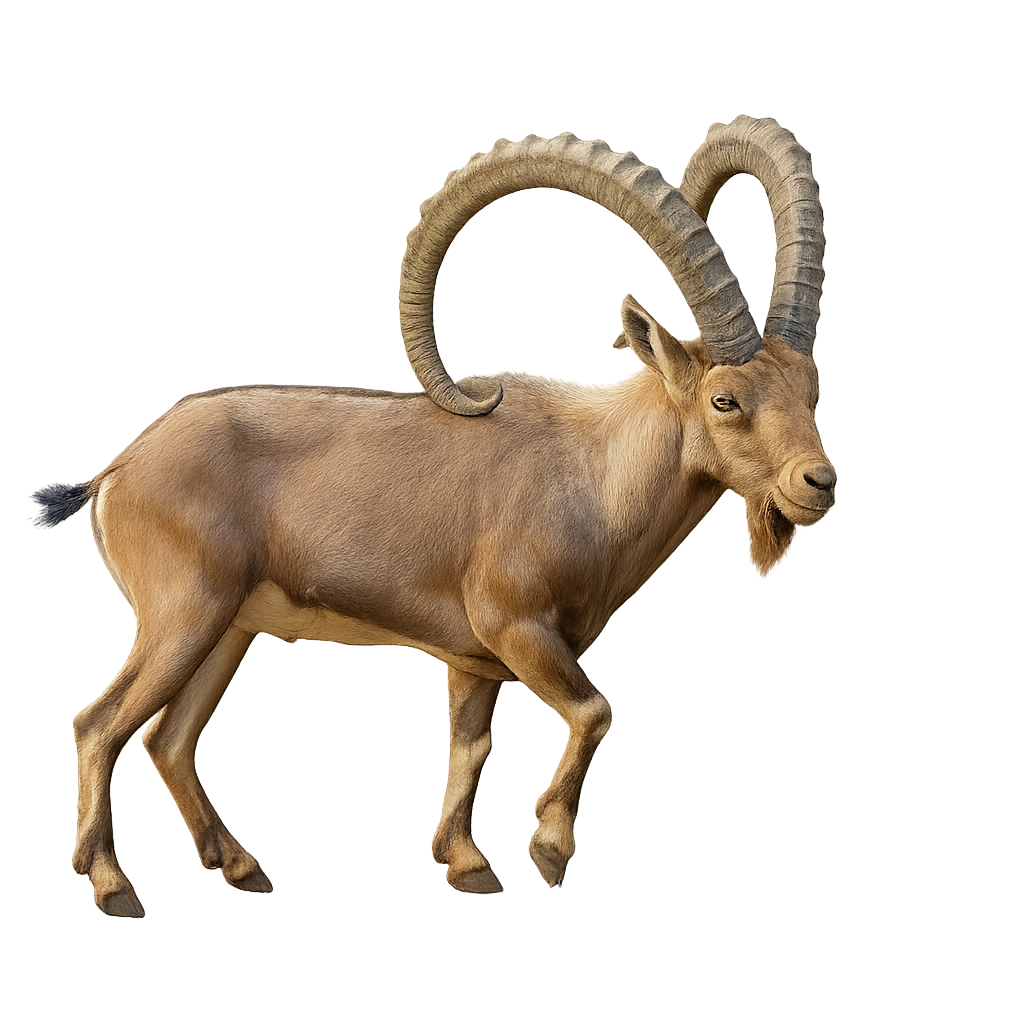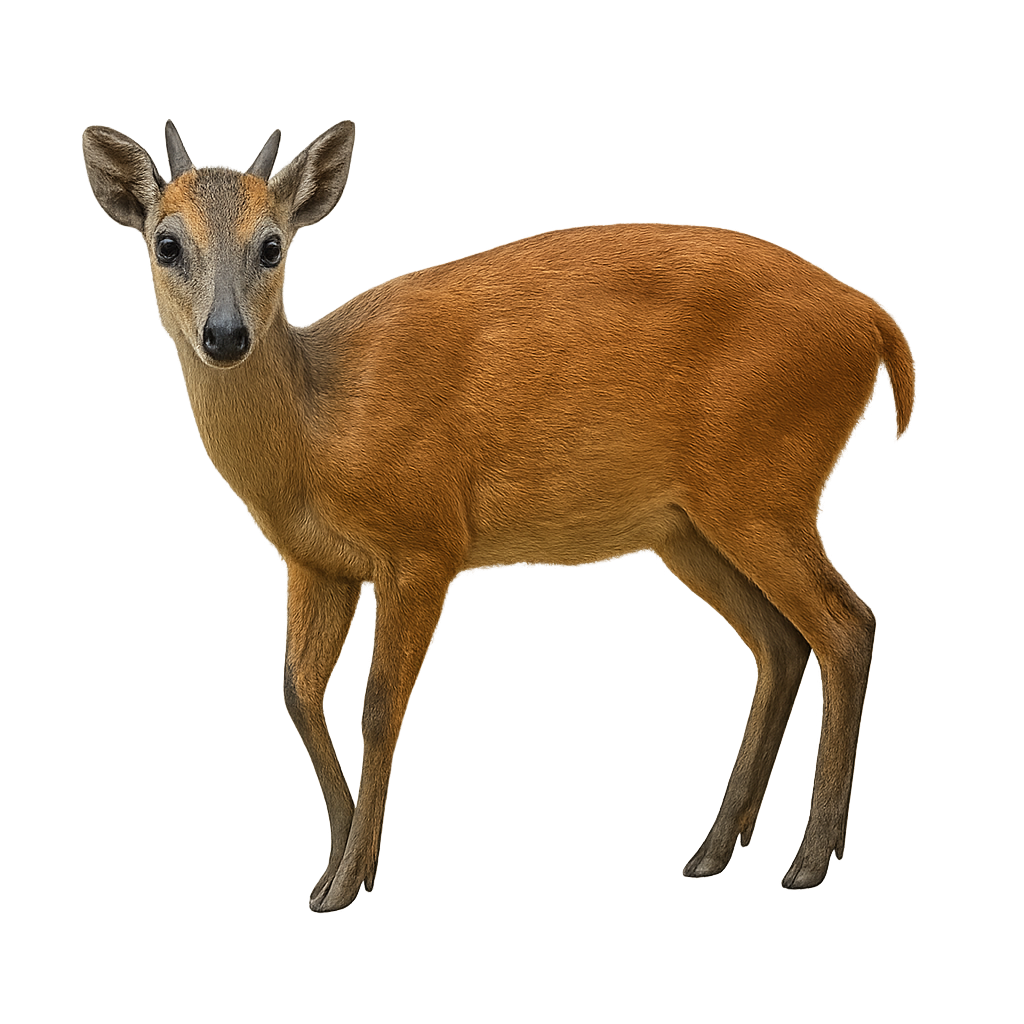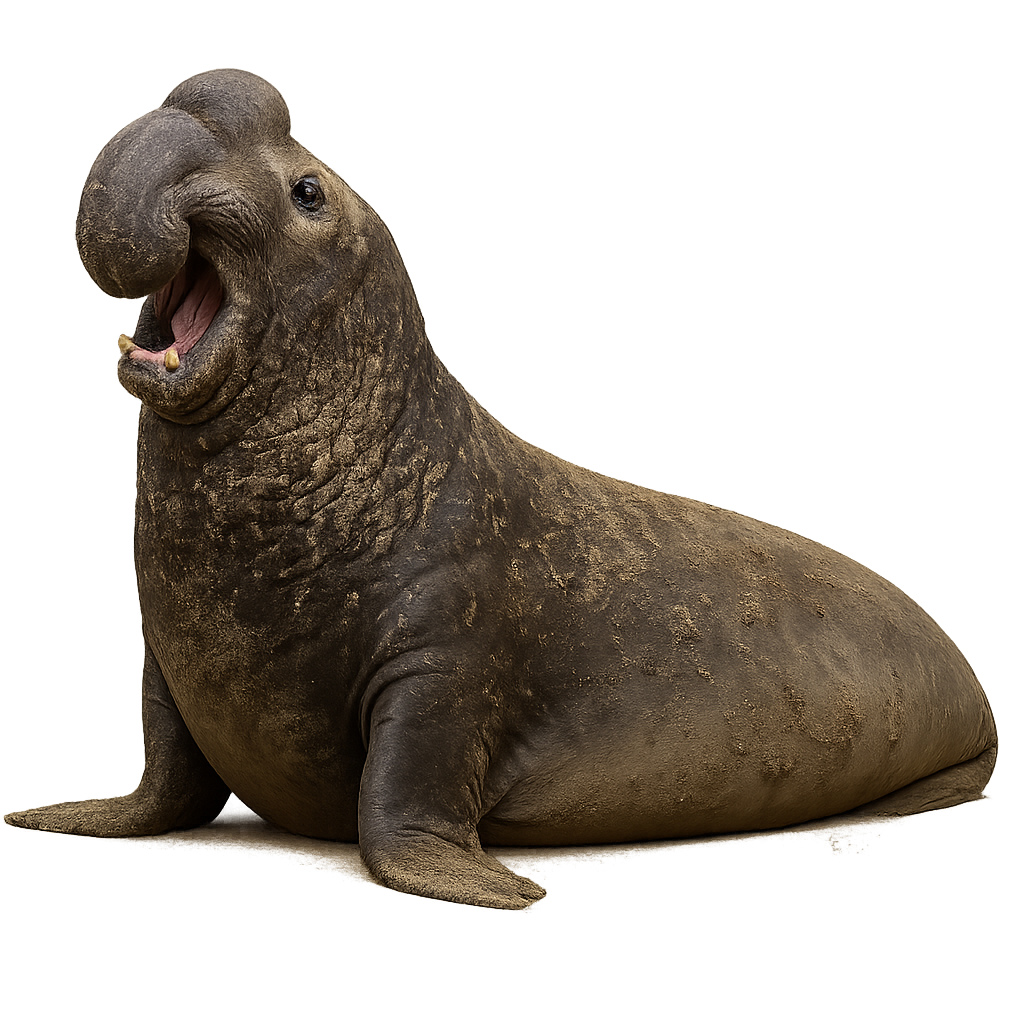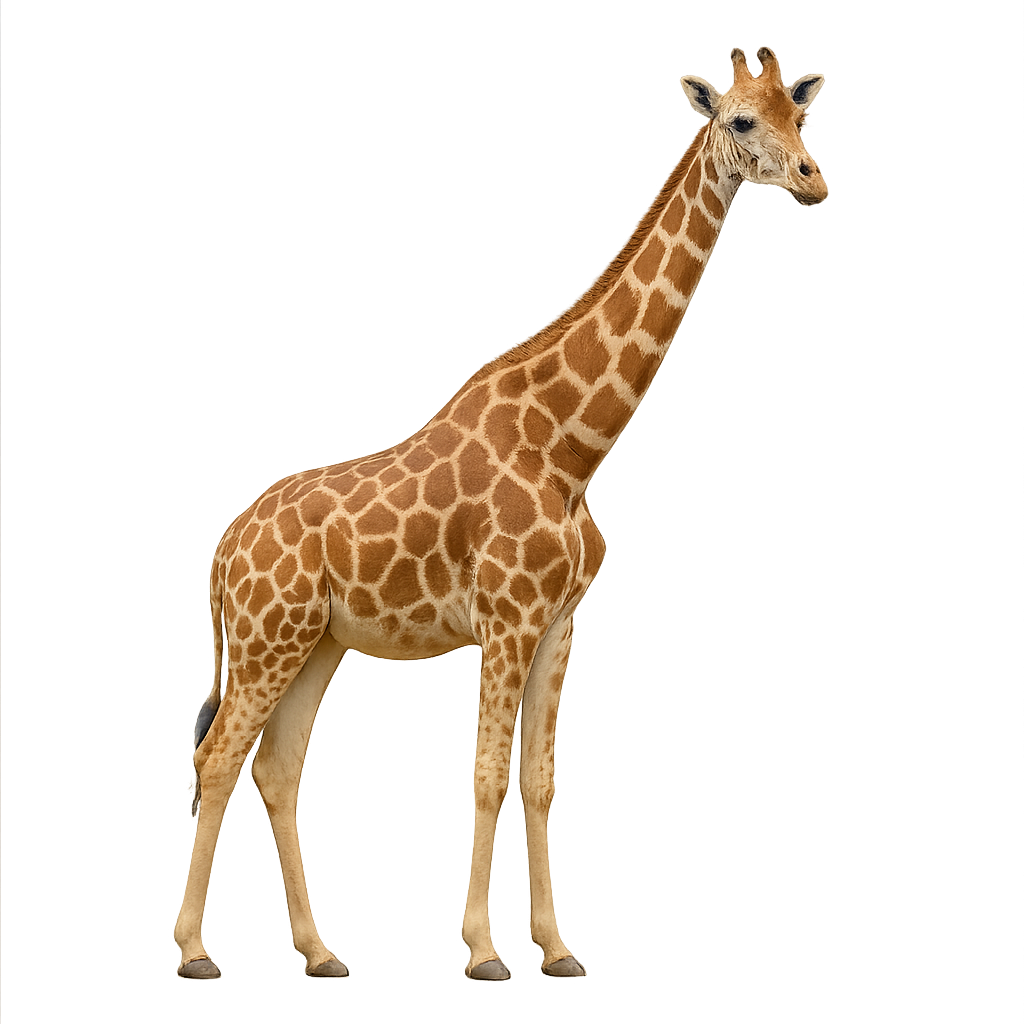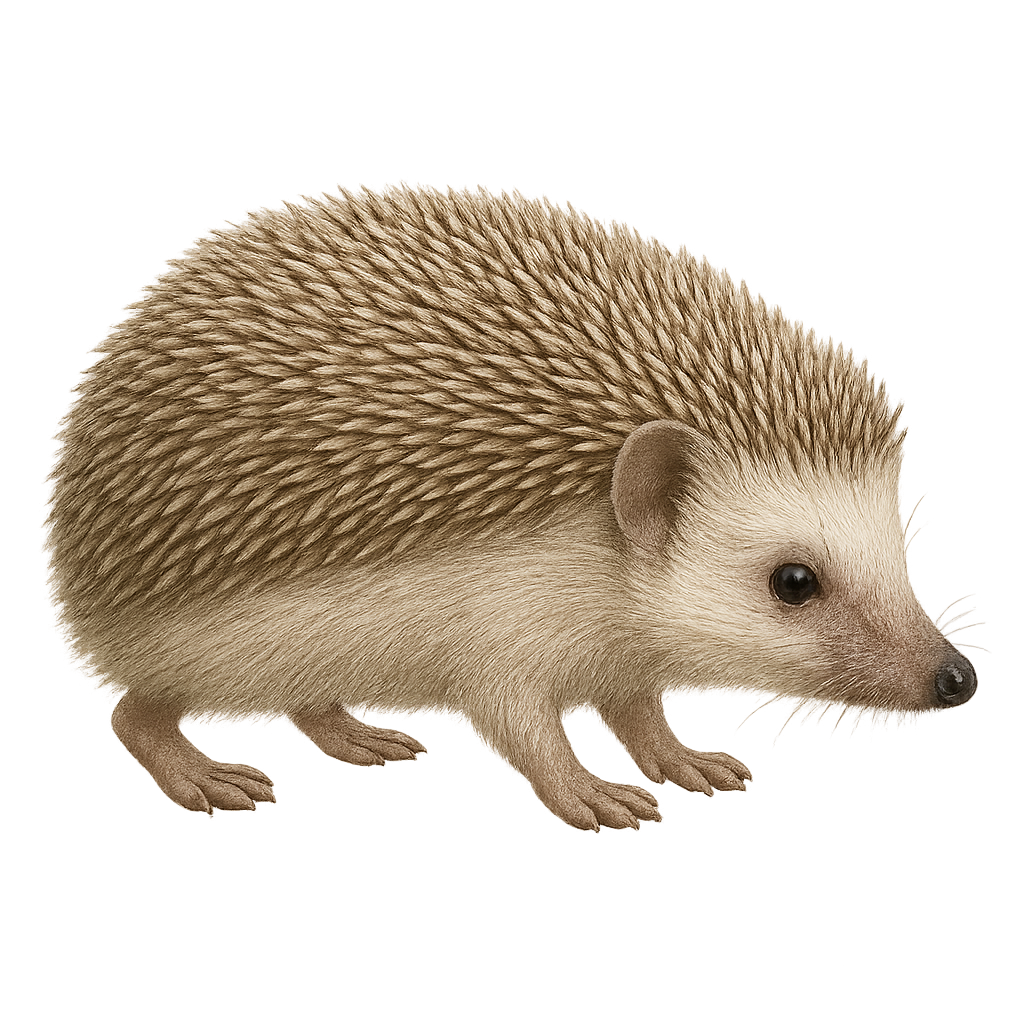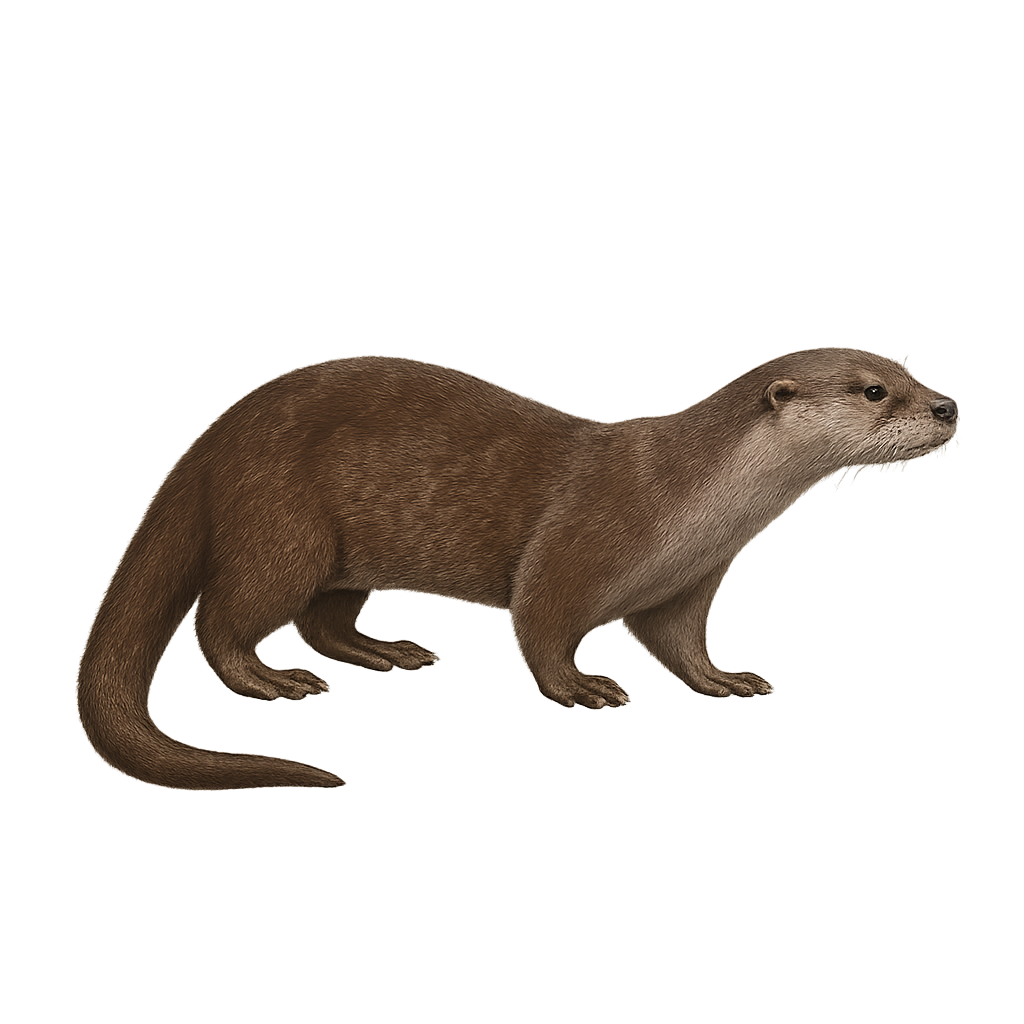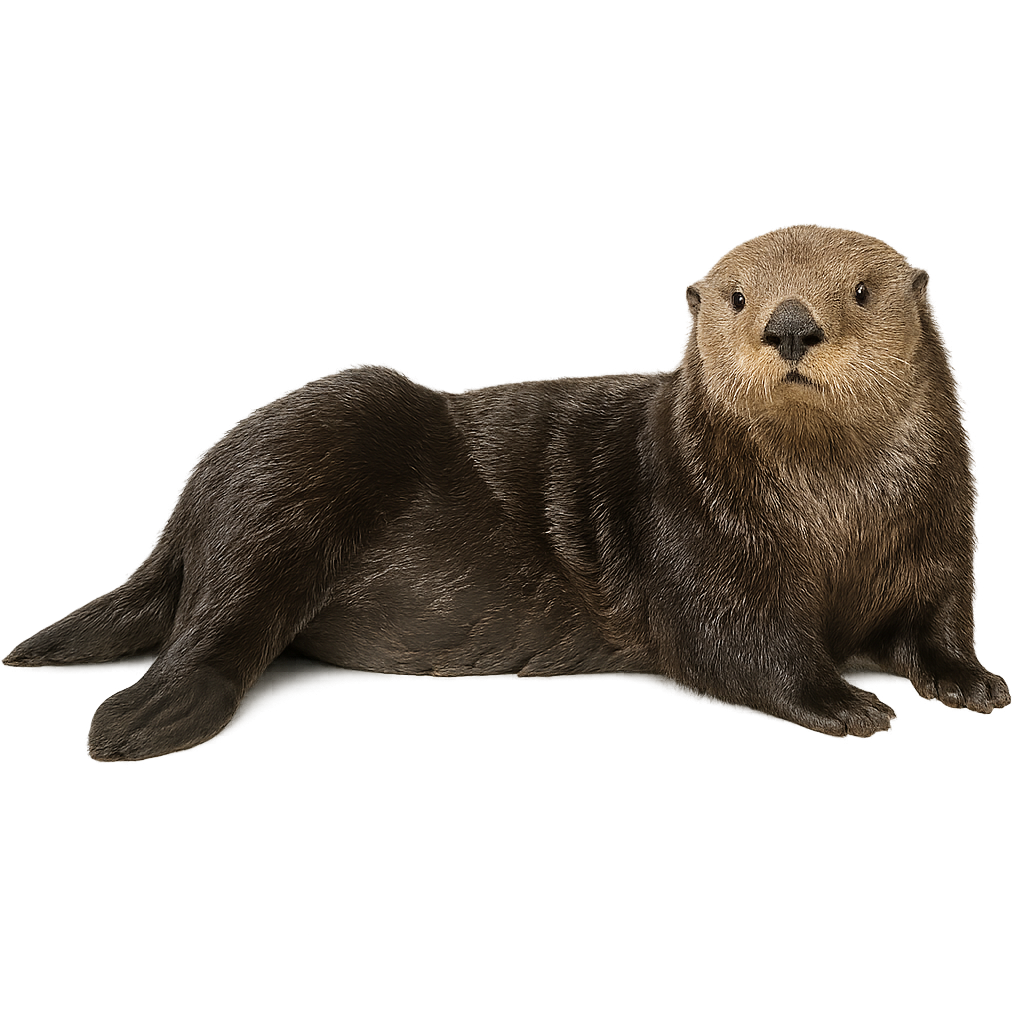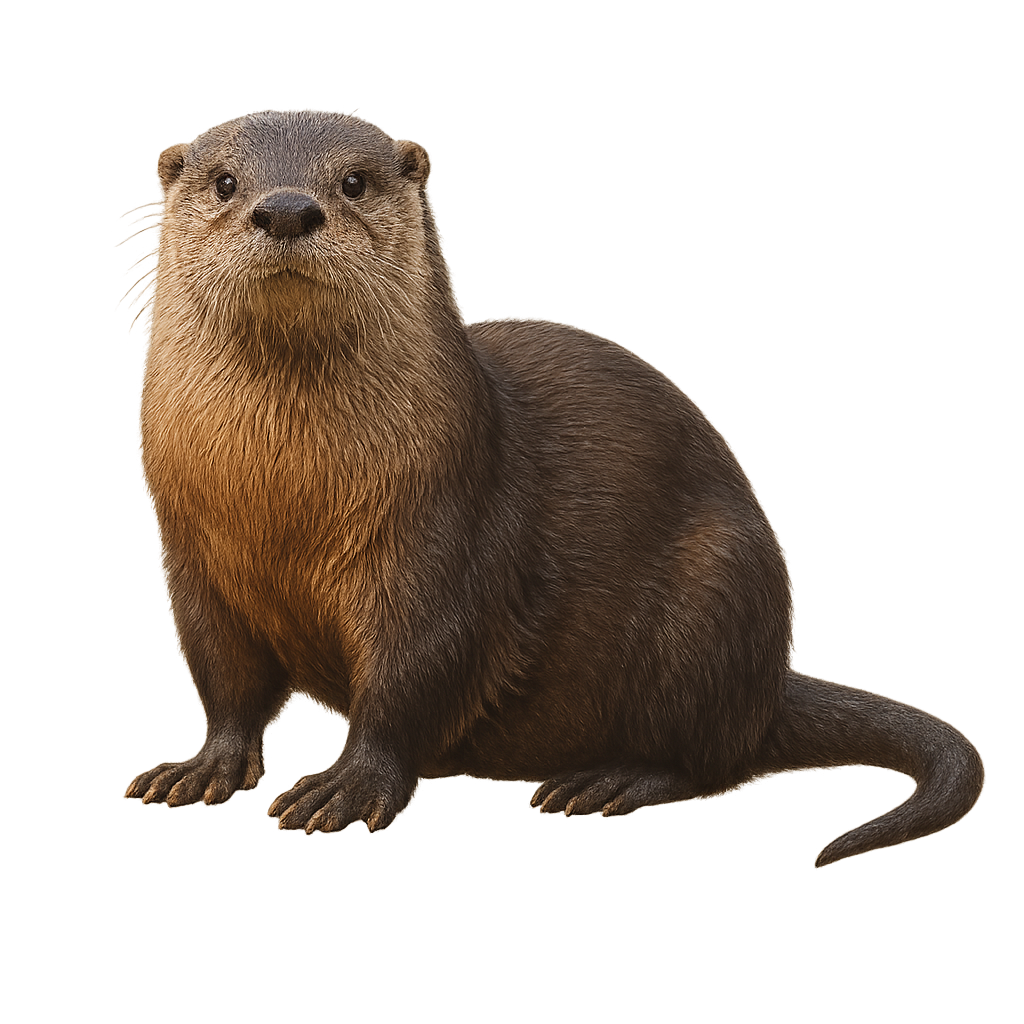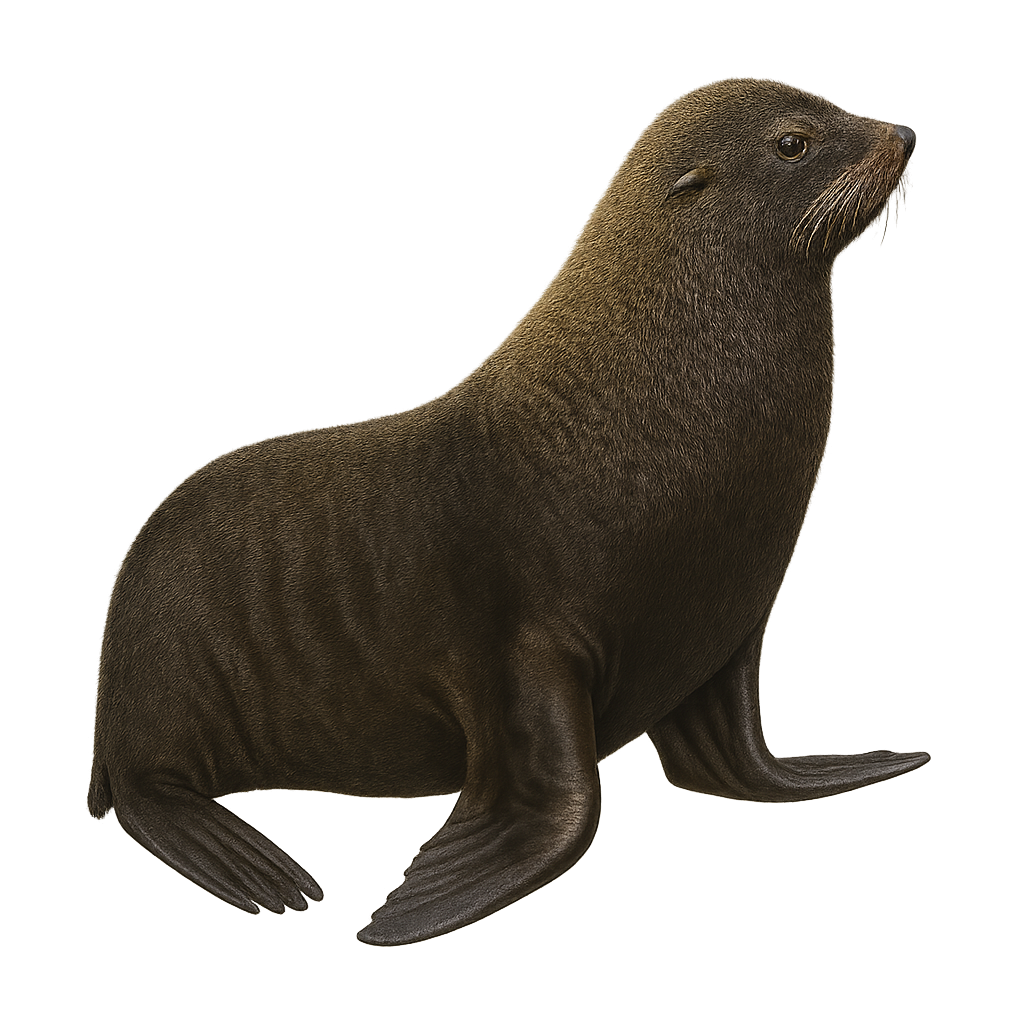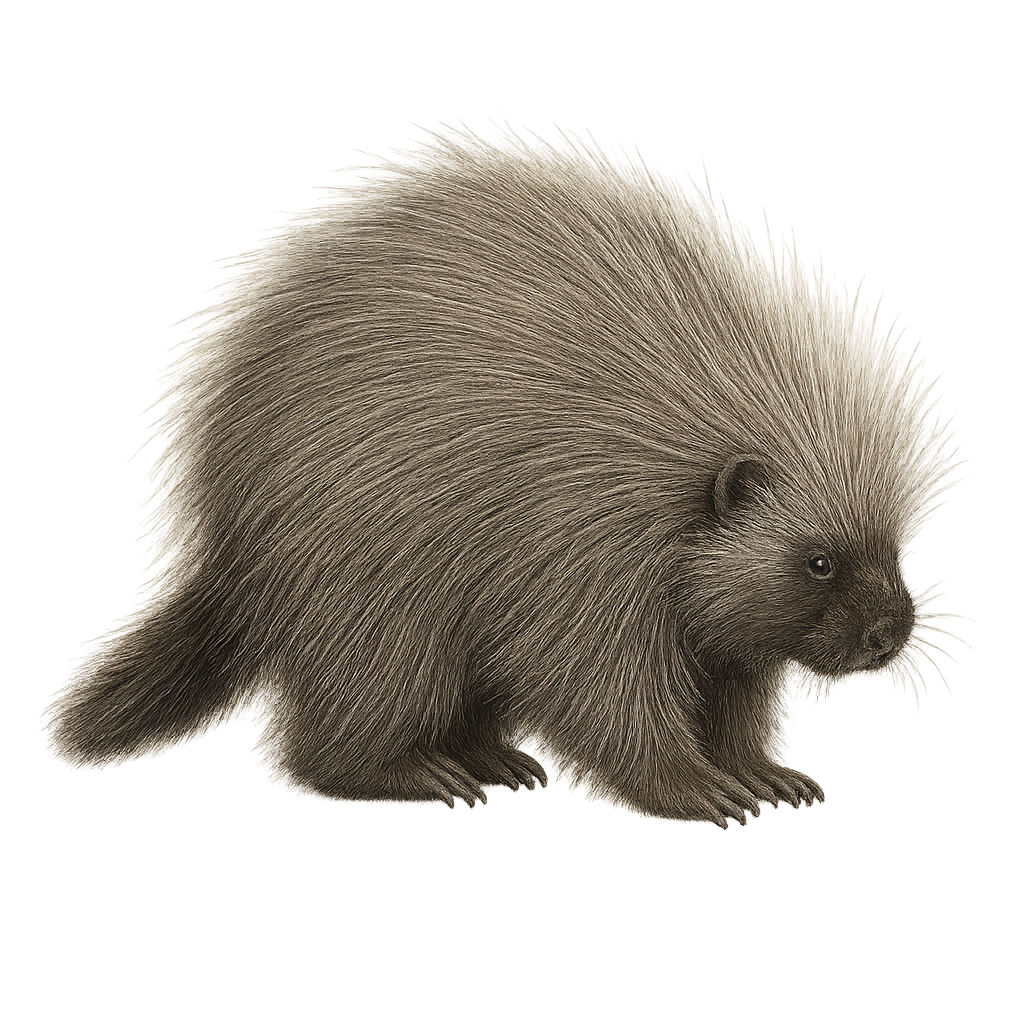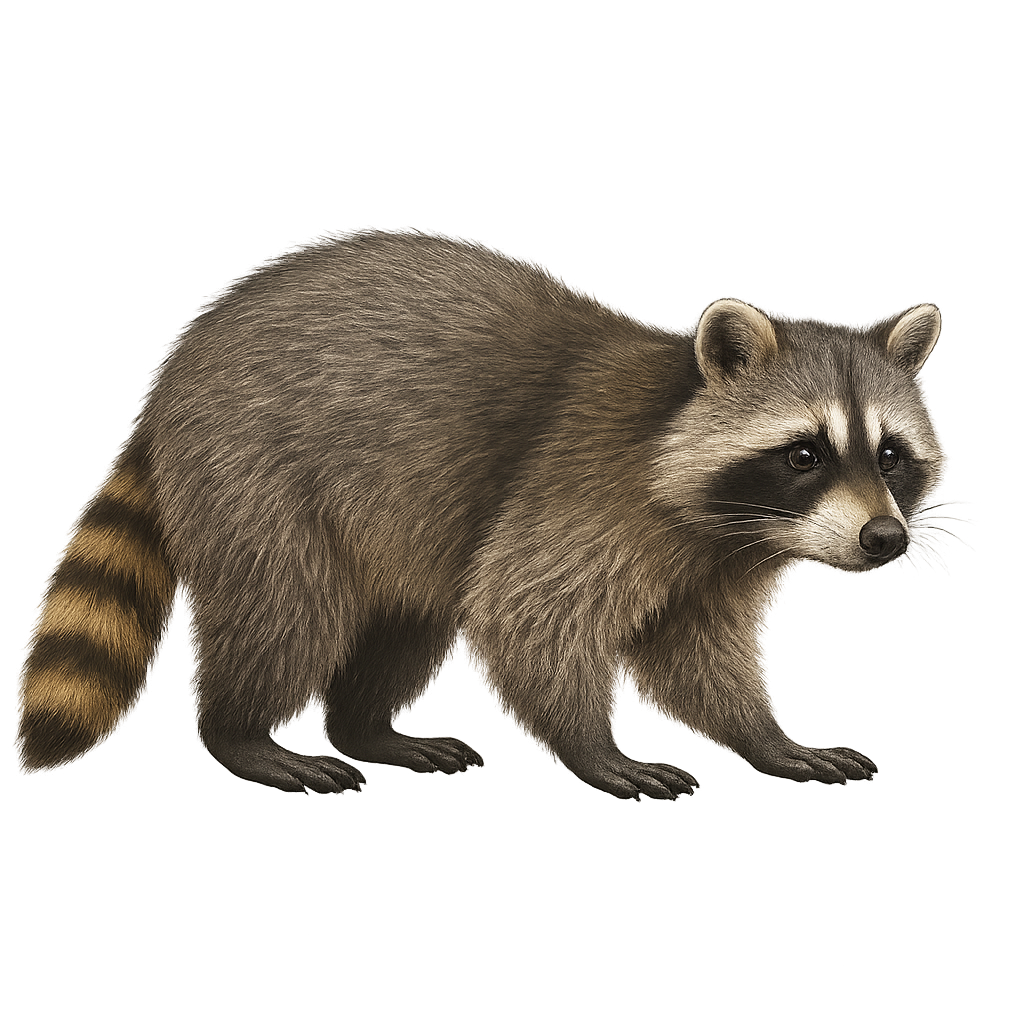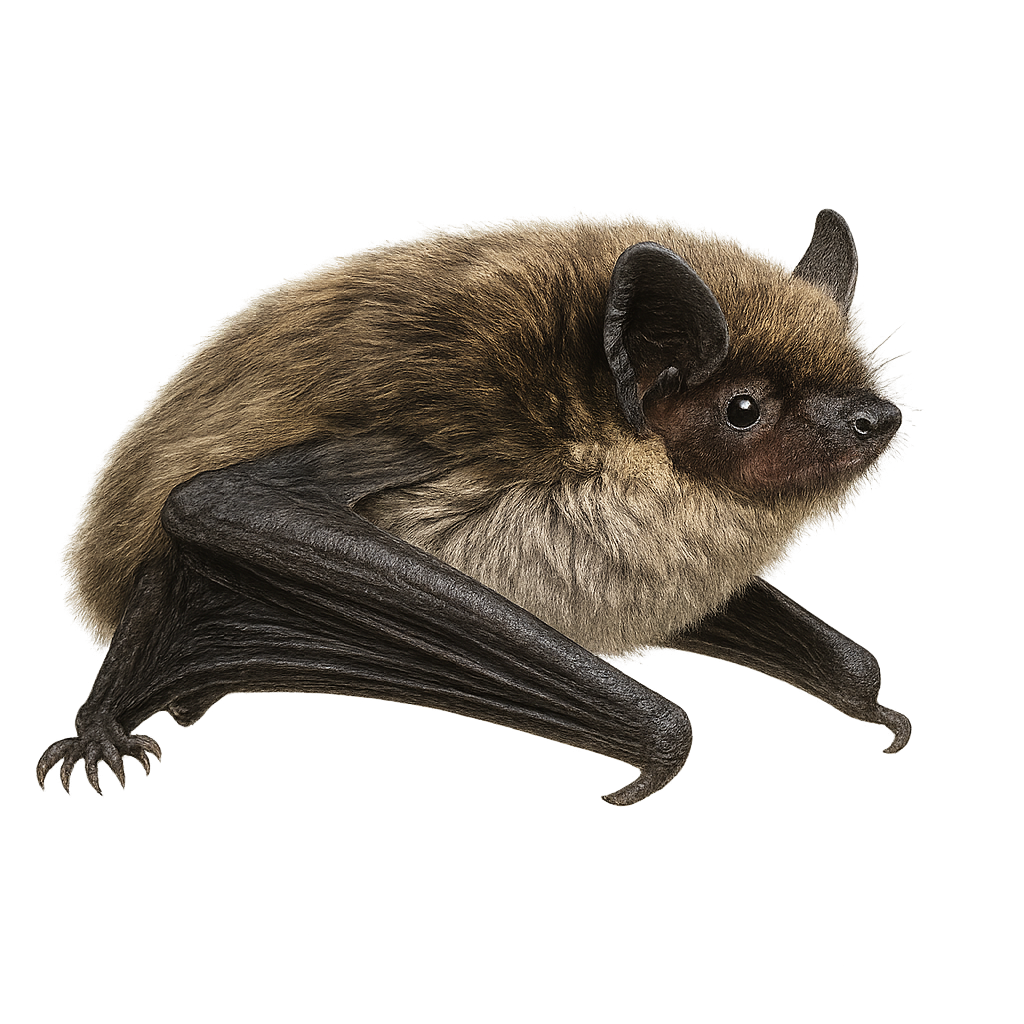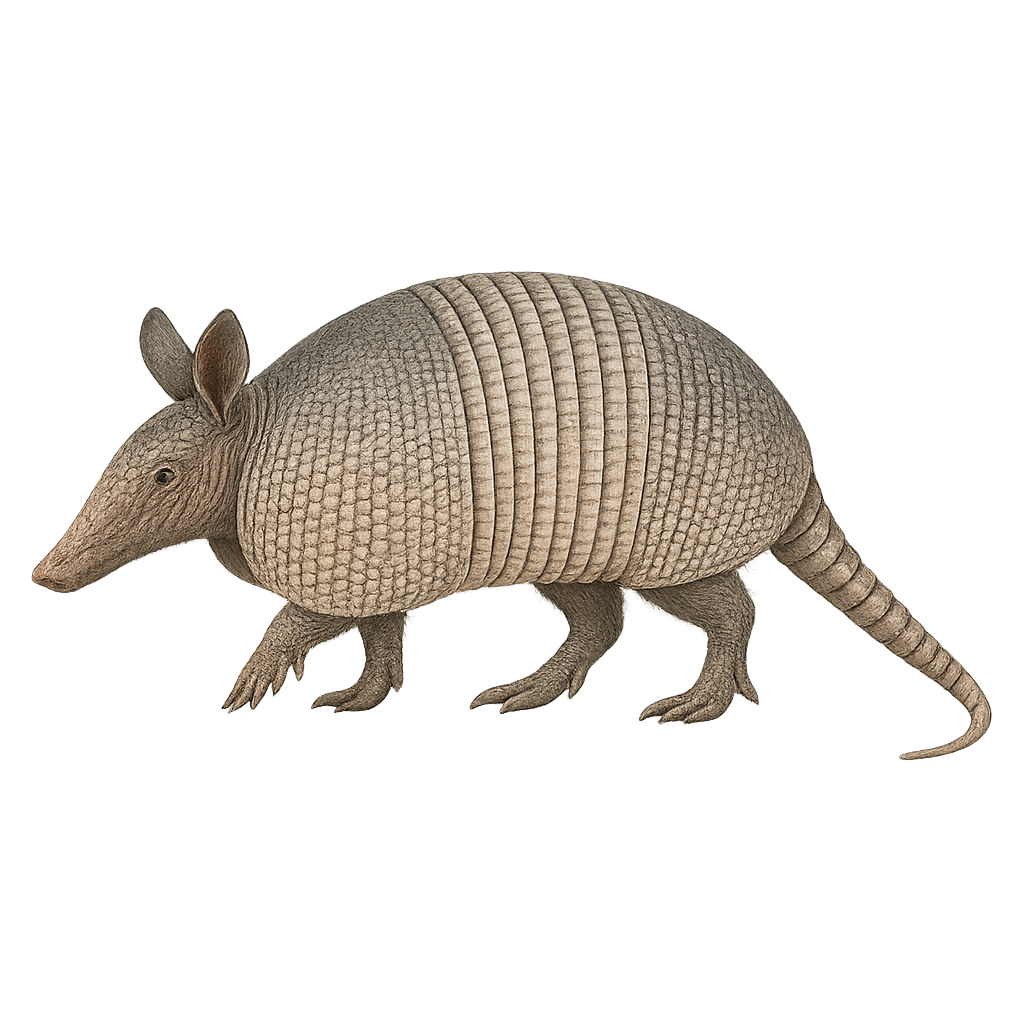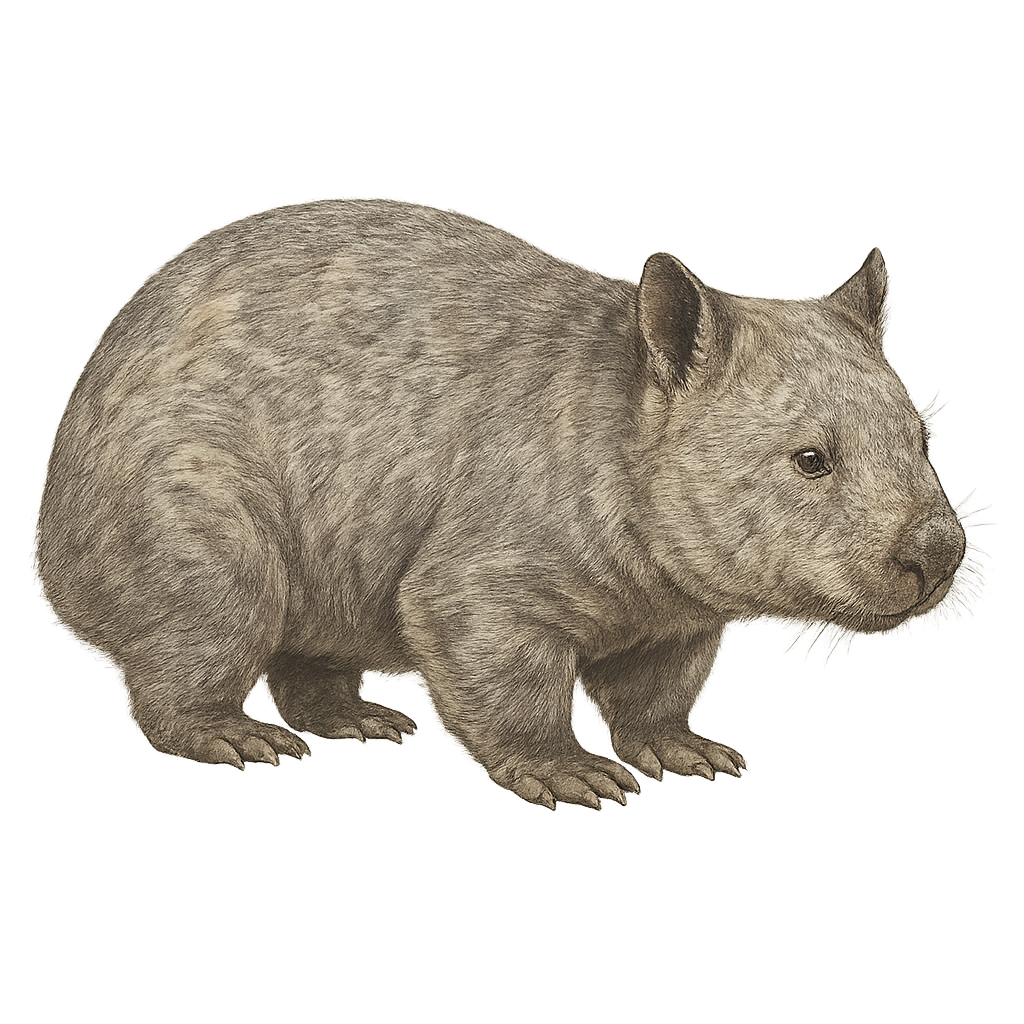The North Atlantic right whale is a large baleen whale, recognized for its imposing size and rough black skin. This cetacean, once hunted for its oil, is now protected and classified as critically endangered. It primarily lives in the coastal waters of the North Atlantic, from New England to Eastern Canada. Feeding on plankton and krill, it uses its baleen plates to filter food. Due to pollution, underwater noise, and ship collisions, the species remains severely threatened.
The Nubian ibex, scientifically known as Capra nubiana, is a species of wild goat that inhabits the mountainous regions of the Middle East and North Africa. Adapted to arid and rocky environments, this caprid finds refuge and sustenance in these challenging terrains. Males are notable for their long, curved horns, while females have shorter, thinner ones. Their coat is typically light brown, providing camouflage against the rocky backdrop. Nubian ibexes are agile climbers, adept at navigating steep and rugged landscapes. They live in groups, often consisting of females and young, while adult males tend to be more solitary. Their diet mainly includes dry vegetation, grasses, and leaves.
The American Beaver is a large, semi-aquatic rodent famous for its construction skills and its ability to modify its environment. It is easily recognizable by its wide head, large orange incisors, and its flat, scaly tail. The American Beaver primarily lives in rivers, lakes, and wetlands, where it builds dams and lodges using branches, tree trunks, and mud to create safe, stable habitats.
This rodent is an excellent swimmer and spends much of its life in the water, where it feeds mainly on bark, roots, and young tree shoots. The American Beaver plays a crucial role in its ecosystem by altering waterways, creating ponds and wetlands that are beneficial to many other species. However, it is sometimes threatened by habitat loss due to urbanization and water management.
The Cephalophus natalensis, or Natal Red Duiker, is a small African antelope that primarily inhabits dense forests and wooded areas in eastern South Africa. It is distinguished by its reddish coat, slender legs, and short, straight horns. This discreet mammal stands about 40 to 50 cm at the shoulder and weighs between 12 and 14 kg. It is mainly active at dawn and dusk, feeding on leaves, fruits, and flowers. The Natal Red Duiker is known for its shy nature and ability to blend into its environment to escape predators. Its population is stable, although deforestation poses a potential threat.
The northern elephant seal is a large marine pinniped, with adult males measuring 3–4 m in length and weighing 1800–2500 kg, and females reaching 2–2.5 m for 400–900 kg. It inhabits sandy beaches and coastal islands of the North Pacific, alternating long foraging trips at sea feeding on squid and fish with land phases at breeding sites. During the breeding season (December to January), males establish harems, produce deep bellows and engage in spectacular fights for female access, while females dig shallow nests and give birth to a single pup.
The Northern Giraffe is a subspecies of giraffe, characterized by its slender body and long neck. It stands about 4.5 to 5.5 meters tall, with males being larger and bulkier than females. Northern giraffes weigh between 800 and 1,200 kg. Their coat is light beige with irregular patches of brown or orange, which are smaller and more closely spaced than those of other giraffe subspecies. These patches are outlined in white, creating a distinctive pattern. The Northern Giraffe primarily inhabits the savannas and open woodlands of northern Kenya, particularly in the Samburu National Reserve and surrounding areas. Herbivorous, it feeds mainly on acacia leaves and other tall vegetation, which it reaches with its long neck and prehensile tongue. The Northern Giraffe is an endangered species, due to habitat loss and human conflicts, including poaching and encroachment on its land.
The North African Hedgehog, Atelerix algirus, is a small insectivorous mammal found mainly in North Africa and parts of southern Europe. It is characterized by its short spines and light-colored face. This hedgehog is well adapted to arid and semi-arid climates, preferring open areas with sparse vegetation. It is primarily nocturnal, feeding on insects, small invertebrates, and occasionally fruits. Its ability to roll into a ball to protect itself from predators is well known. Although generally solitary, it can be observed in small groups during the breeding season. Its population is stable, but it is threatened by habitat loss and road collisions.
The Neotropical Otter, or Lontra longicaudis, is a semi-aquatic mammal found primarily in the rivers and lakes of Central and South America. It is recognizable by its sleek body, dense waterproof fur, and long muscular tail. Measuring between 90 and 150 cm, it typically weighs from 5 to 15 kg. This species is known for its playful and curious behavior, often seen sliding down banks or diving in search of fish, crustaceans, and other small aquatic animals. Although mainly solitary, it can sometimes be seen in small family groups. The Neotropical Otter is an important indicator of aquatic ecosystem health, as it requires clean waters rich in prey.
The Enhydra lutris kenyoni, or northern sea otter, is a fascinating marine mammal known for its dense fur and playful behavior. It primarily inhabits the North American coasts, from Alaska to British Columbia. These otters are skilled divers, feeding on mollusks, crustaceans, and fish. They play a crucial ecological role by regulating sea urchin populations, thus preserving kelp forests. Sea otters are often seen floating on their backs, using stones to open shells. Although their population was decimated by hunting for their fur, conservation efforts have led to some recovery. However, they remain vulnerable to oil spills and climate change.
The North American River Otter, or Lutra canadensis, is a semi-aquatic mammal belonging to the Mustelidae family. It is recognizable by its streamlined body, webbed feet, and muscular tail. Its thick, waterproof fur ranges from dark brown to silvery gray. Measuring between 90 and 135 cm, it typically weighs 5 to 14 kg. Adapted to aquatic life, it is an agile and fast swimmer. It primarily feeds on fish, but also consumes crustaceans, amphibians, and small mammals. The river otter is a social animal, often observed in family groups. It plays a crucial role in the ecosystem by regulating fish populations and maintaining the health of waterways.
The Narwhal is a unique cetacean, often referred to as the "unicorn of the seas" due to the long twisted tusk it possesses, typically in males. It measures between 4 and 5 meters in length and can weigh up to 1,600 kg. The narwhal's tusk can reach up to 3 meters in length and is actually a tooth that grows asymmetrically, often spiraling. Its body is gray to white with black and white patches that vary from one individual to another. The Narwhal primarily inhabits the cold waters of the Arctic, where it feeds on fish, crustaceans, and cephalopods. It is an excellent diver, capable of descending to great depths in search of food. While its population remains relatively stable, it is threatened by climate change, water pollution, and human disturbances. Due to its beauty and rarity, it is also highly sought after for illegal horn trade.
The numbat is a small insectivorous marsupial endemic to Western Australia, measuring 25–35 cm long with a reddish coat marked by horizontal white bands. Strictly diurnal, it feeds almost exclusively on termites, which it captures using its long sticky tongue and powerful front claws. Solitary, it occupies abandoned burrows or natural hollows in dry eucalyptus woodlands and pine forests. During the breeding season, males and females become more territorial and engage in rapid ground chases before mating.
The Arctocephalus forsteri, commonly known as the New Zealand fur seal, is a marine mammal species belonging to the Otariidae family. These seals are primarily found around the coasts of New Zealand and parts of Australia. They are distinguished by their dense, waterproof fur, which protects them from cold waters. Males are significantly larger than females, reaching up to 2.5 meters in length and weighing around 180 kg, while females measure about 1.5 meters and weigh up to 50 kg. These animals are known for their agility in the water, where they primarily hunt fish and cephalopods. On land, they gather in colonies, especially during the breeding season.
The Northern fur seal, Callorhinus ursinus, is a marine mammal belonging to the Otariidae family. It is distinguished by its thick fur, which allows it to withstand the cold waters of the North Pacific. Males are significantly larger than females, reaching up to 2.1 meters in length and weighing around 270 kg, while females measure about 1.4 meters and weigh 50 kg. These seals are known for their gregarious behavior, forming large colonies on rocky islands to breed. They primarily feed on fish and squid, which they capture during dives that can reach depths of 200 meters.
The North American Porcupine, Erethizon dorsatum, is a tree-dwelling rodent known for its sharp quills that protect it from predators. Measuring between 60 and 90 cm long, excluding its 20 to 30 cm tail, it typically weighs between 5 and 14 kg. Its fur is dark brown to black, interspersed with white or yellow quills. These quills, which can reach 7.5 cm, are modified hairs that easily detach to embed in predators' skin. This rodent is primarily nocturnal, feeding on leaves, bark, and fruits. It inhabits the coniferous and mixed forests of North America, from Canada to northern Mexico. Although an agile climber, it also spends considerable time on the ground.
The Raccoon is a small omnivorous mammal native to North America, but it has now spread widely to other regions of the world, including Europe and Asia. It measures about 40 to 70 cm in length, with a tail of 20 to 40 cm, and weighs between 4 and 10 kg. Its fur is primarily gray, with a distinctive black mask around the eyes, giving it a unique appearance. The Raccoon is an excellent climber and feeds on fruits, nuts, small animals, insects, as well as food scraps when it lives near human settlements. It is known for its curious behavior and its habit of "washing" its food, although this gesture is actually a reaction to the sensation of moisture in its paws. While its population is widespread, this species can sometimes be seen as a pest, especially due to its tendency to rummage through trash and cause damage to homes.
The Northern right whale fin is a large baleen whale that primarily lives in the cold waters of the Atlantic and Pacific Oceans. It is one of the largest cetaceans, characterized by its streamlined body and fast swimming. Unlike other whales, it prefers deeper waters and is less often observed near the coast. The Northern right whale fin is threatened by pollution, underwater noise, and ship collisions, and is classified as vulnerable due to past commercial whaling.
The Northern Bat, Eptesicus nilssonii, is a medium-sized bat found in northern Europe and Asia. It is characterized by its dark brown fur, which is often lighter on the belly, and relatively short ears. It primarily inhabits coniferous forests but can also be found in urban areas, using buildings for roosting. This nocturnal species feeds on insects, which it catches in flight using sophisticated echolocation. It is mainly active during summer nights, while it hibernates in winter in caves or abandoned buildings. Although its conservation status is currently considered "least concern," it remains sensitive to human disturbances and the loss of its natural habitat.
The Mexican Tamandua, or Tamandua mexicana, is an insectivorous mammal primarily found in the tropical and subtropical forests of Mexico, Guatemala, and Honduras. It typically measures between 50 and 70 cm in length, with a tail of 40 to 50 cm, and weighs between 4 and 7 kg. Its fur is generally yellow-brown, with a black mask around the eyes and a wide black band on its back. This tamandua has a long tongue, which can reach up to 40 cm, used to catch termites and ants, its main food source. The Mexican Tamandua is also an excellent climber, spending much of its time in trees. It is generally nocturnal and primarily feeds on insects and occasionally fruits. While its population remains relatively stable, it is sometimes threatened by deforestation and the loss of its natural habitat.
The nine-banded armadillo, Dasypus novemcinctus, is a distinctive armored mammal native to the Americas. It is easily recognized by its hard shell made of bony plates and its nine movable bands that provide some flexibility. This armadillo typically measures between 40 and 60 cm in length, not including its tail, which can add an additional 25 to 40 cm. It weighs between 3 and 6 kg. Primarily nocturnal, it feeds on insects, small invertebrates, and occasionally fruits. It can dig quickly to escape predators or find food. Although often solitary, it can be seen in small groups during the breeding season.
The Northern Hairy-nosed Wombat, or Lasiorhinus krefftii, is a rare and critically endangered marsupial native to Australia. This robust mammal is characterized by its hairy nose and dense, silky fur. It primarily inhabits grassy areas and open forests. Northern Hairy-nosed Wombats are expert burrowers, digging extensive burrows to protect themselves from predators and extreme weather conditions. They are mainly nocturnal, feeding on grasses and roots. Their population is extremely limited, with only a few dozen individuals remaining, making them one of the most endangered species in the world. Conservation of their habitat is crucial for their survival.


